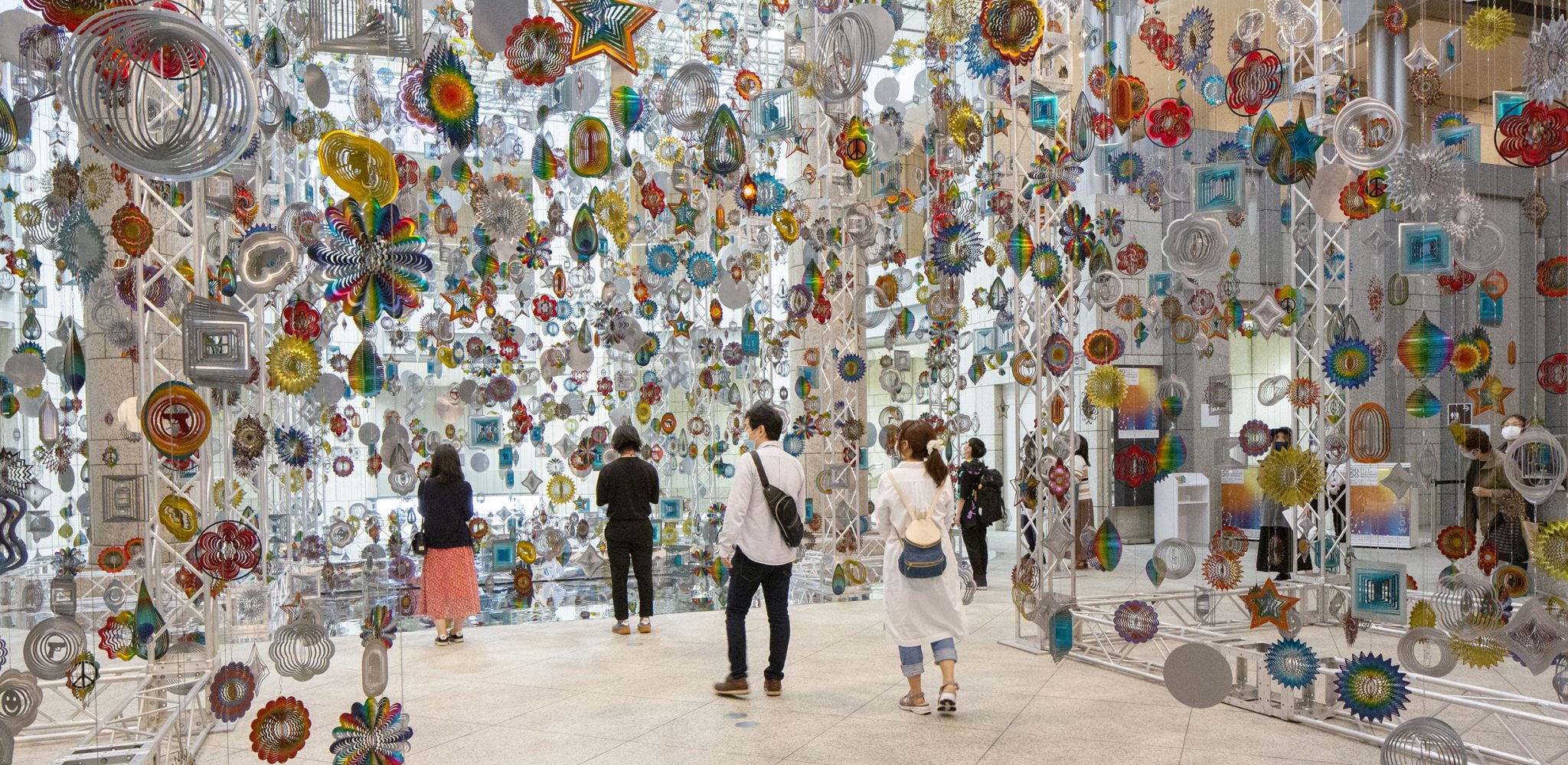The curators say they want to cultivate discourses of justice, but the political infrastructure is precisely what’s left out of discussion
One can look almost anywhere – from the rise of femicide in Turkey, the murder of Black people by police and of trans people in America and China’s crackdown on Hong Kong, to the fortification of national borders and the fact that climate change is turning more and more of the global south into a living hell – to see that these are degenerate times.
Yet these are also transformative times. We’re seeing changes being made as a result of the largest antiracist movement in history. Ordinary people have appropriated the internet as a political tool to fight for diversity, equity, inclusivity and justice. In this context, Yokohama Triennale 2020 should be celebrated. It brings, for the first time, a non-Japanese artistic director, Raqs Media Collective, which comprises three artists based in New Delhi, who have selected 67 artists (individuals and groups) from around the world to make work in three physical venues and on one virtual platform. More than half are showing in Japan for the first time.
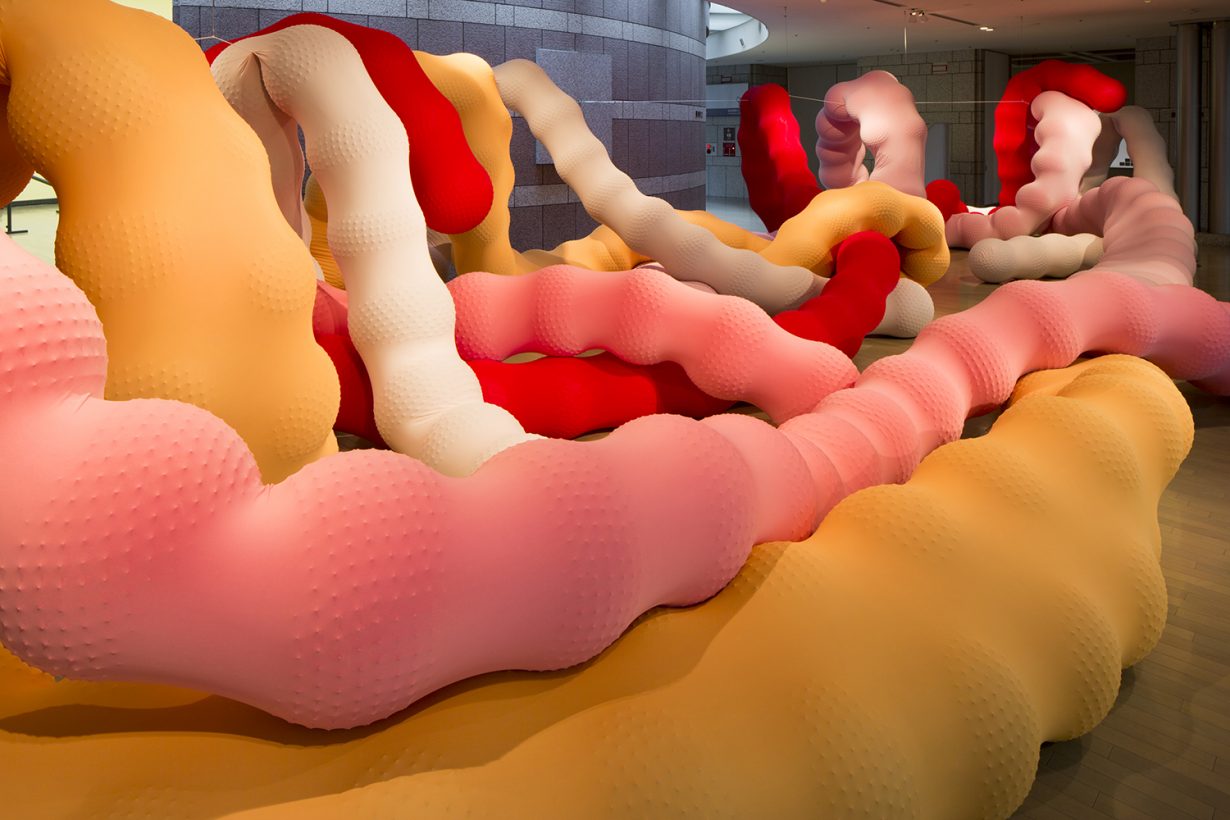
Unfortunately, the Yokohama Triennale 2020 also feels out of joint. The title and theme of the show is Afterglow. The exhibition’s key idea is framed as ‘luminosity’, which stands in the curatorial framework alongside terms like ‘autodidact’, ‘care’, ‘friendship’ and ‘toxicity’. The metaphor of radiance is inspired by corals that glow to warn of ultraviolet irradiation and the fact that television static is, in part, transmitting the afterglow of the Big Bang.
As Charles and Ray Eames’s 1977 film, Powers of Ten, demonstrates, thinking at different scales, ranging from the micro to the macro, can be electrifying. There is a risk, however, of mystifying and naturalising micro issues such as nuclear power or the status of television as a medium by considering them at a cosmic scale. It’s well known that when Philo Farnsworth first demonstrated his invention – the television set – to the press in 1928, he transmitted a dollar sign. Much of the voting public in Japan are elderly television watchers, and Tokyo governor Yuriko Koike, a nationalist and xenophobic revisionist, successfully manipulated the medium in the recent election to shut out any opposing voices. Aren’t these stories more telling than the cosmic late-night stoner tale of Big Bang transmissions that fascinates the curators?

Renuka Rajiv’s papier-mâchés, monoprints and fabric pieces, which combine playful, almost childlike imagery with idiosyncratic sentiments, and humorously and movingly articulate intersections of the psychosexual and sociopolitical, demonstrate that neither an appeal to the cosmic nor the sacrifice of the local is necessary for broader communication. The text in one work reads, ‘VIVID LIKE A COVID DREAM’ and ‘HOPE THINGS NEVER GO BACK TO NORMAL’, showing that micro-personal expressions can resonate effectively within a broader social context.
Raqs Media Collective claims that this Yokohama Triennale is site-specific. Here’s a local context for understanding Yokohama Triennale 2020: despite a record-breaking surge in COVID-19 infections, Japan’s Ministry of Land, Infrastructure, Transport and Tourism moved up the launch of its ‘Go To’ tourism campaign, which will subsidise domestic travellers, to a week after the opening of the Yokohama Triennale. The cost of this campaign is ¥1.6 trillion, more than double what the government has spent on COVID-19 infection-prevention measures and establishing a medical system to deal with the pandemic.
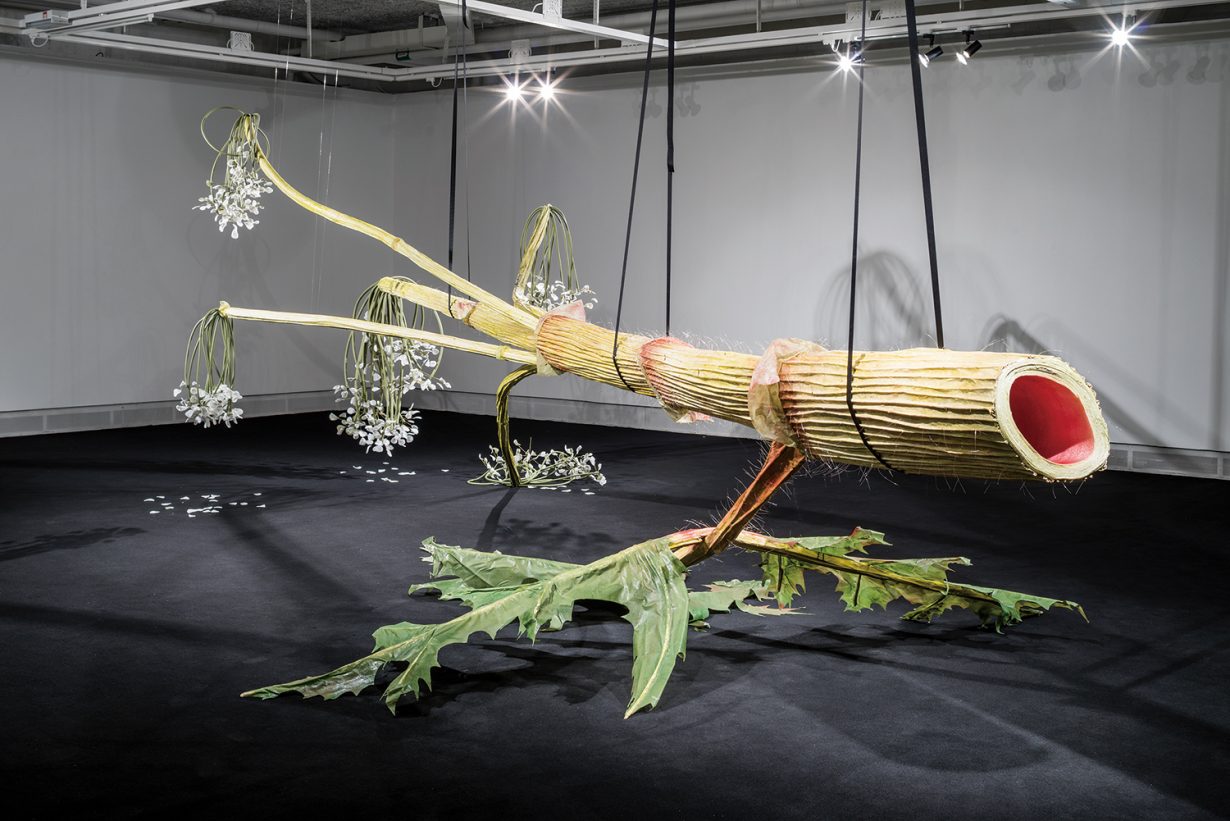
In the context of its site, the opening of Yokohama Triennale, a state- and media-organised exhibition (involving the City of Yokohama, Japan’s national broadcaster NHK and national newspaper Asahi Shimbun), functions as part of a larger national programme of deceit and normalisation that also comprises the ‘Go To’ campaign and 2020 Olympic Games, which had been scheduled to open a week after the Triennale. The curators say they want to cultivate discourses of justice, but the political infrastructure is precisely what’s left out of discussion. How then can we understand this exhibition as anything but a tone-deaf spectacle?
Watching multiple masked and uniformed museum staff standing in the searing sun through the cool, blue glass walls of the second site Plot 48, a repurposed recreational facility for children, I am transported to the eerie world of Todd Haynes’s 1995 film, Safe. Hygiene is apparently maintained with strict discipline in the exhibition, but something isn’t right. Yes, temperatures are taken at the door. Yes, a neatly dressed white-haired man sanitises the railing while I walk down the stairs. But who’d feel safe spending hours in a series of black rooms watching all the exhibited videos right now?
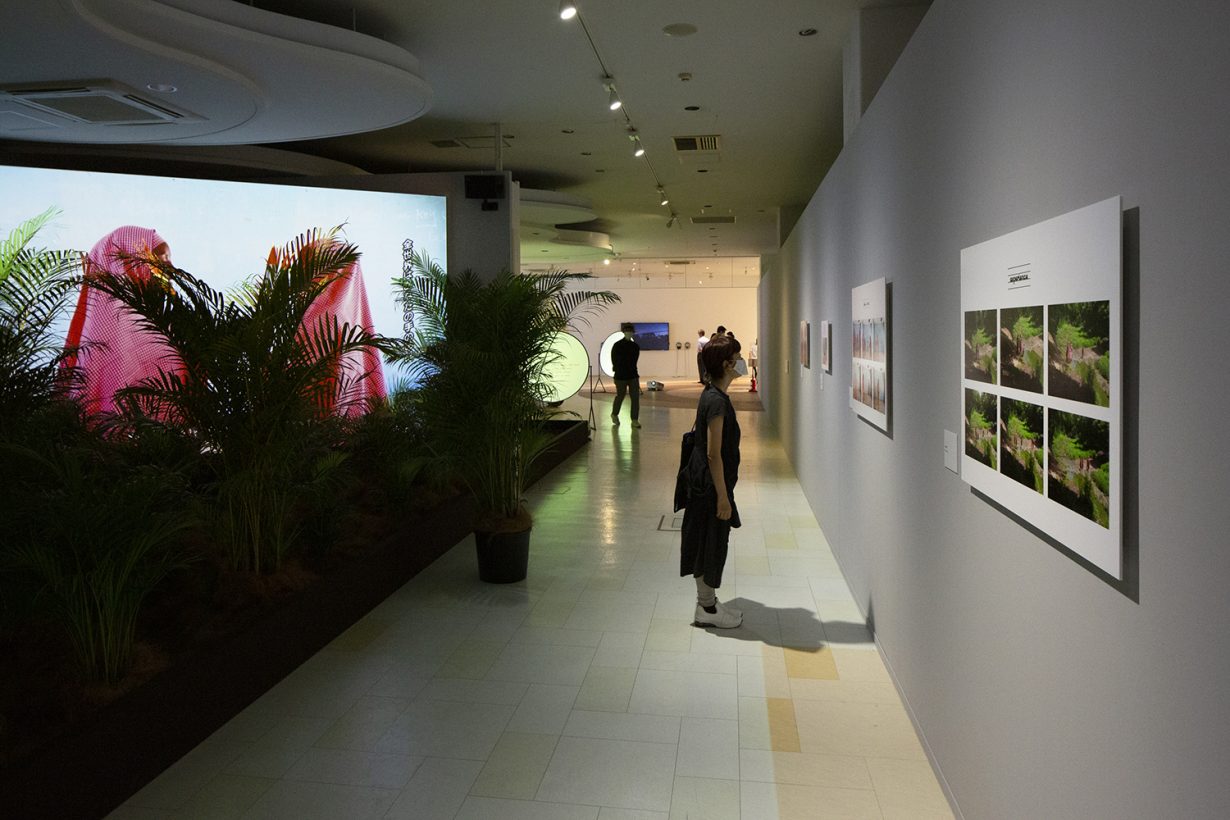
A pesky elephant lingers in every dark room illuminated by a screen: must the show go on? There was also a Yokohama Triennale in 2011, after 11 March, after another invisible and manmade disaster – nuclear radiation caused by the meltdown of TEPCO’s Fukushima Daiichi Nuclear Power Plant. As a part of that exhibition, the Japanese artist Shimabuku made Stop and Think (2011), a remote installation of a sign with the titular message, a message of which the current Yokohama Triennale organisers might have taken heed.
Many of the exhibited works are of interest and should be experienced. At one point I am delightfully surprised watching and taking respite in Sarker Protick’s blissed-out ambient sound-video piece when admonishing calls to “stop slouching!” “be quiet!” “don’t eat so much!” and “chin up!” dissonantly emanate from Taus Makhacheva’s installation of strange gymnastics equipment. Single-channel videoworks, of which there are many, could easily be delivered online, however. Iiyama Yuki’s OLD LONG STAY (2020) is an important political work in the classic, edifying sense. It admirably, if very conventionally, tackles the complicated intersections of ableism and nationalism by shedding light on the grassroots struggle of lifelong Japanese residents of Korean nationality with disabilities to receive pensions. Properly disseminated, works like this may convey to the Japanese public that institutionalised prejudice is not a problem that exists exclusively in faraway lands.
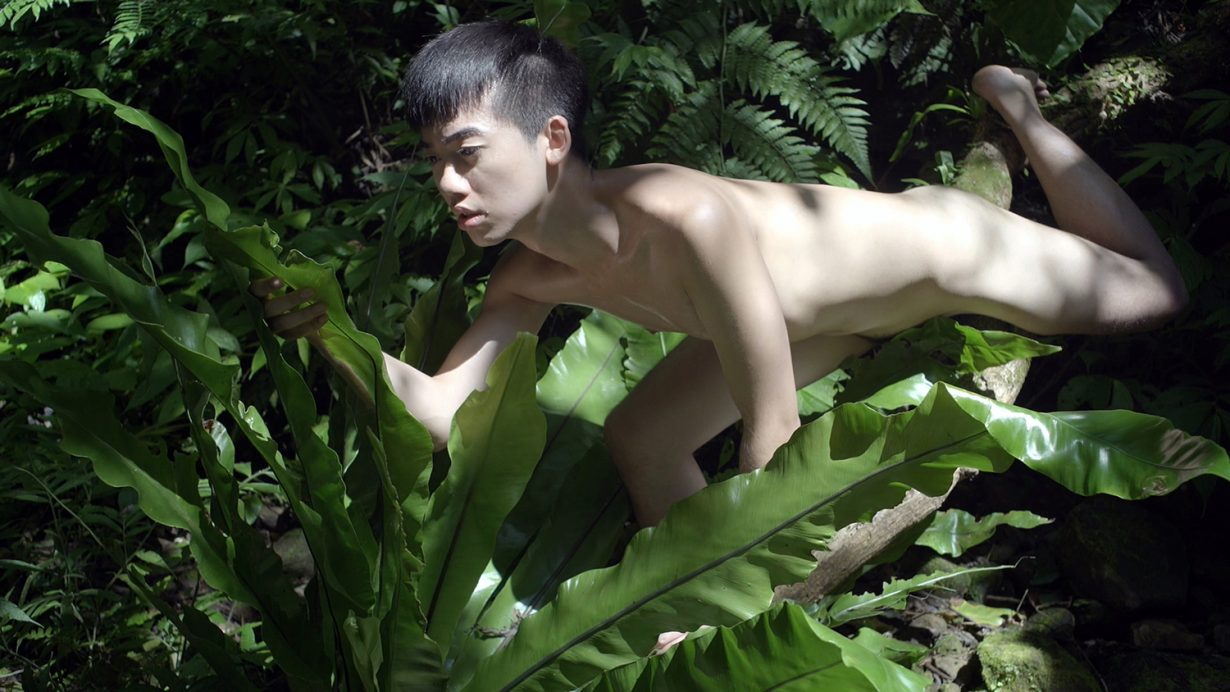
Zheng Bo’s very queer and relatively short video Pteridophilia I-IV (2016–19) is more experimental in its treatment of sex. Sex can create new intensities, new pleasures and new linkages. By contiguity, the projected images of young naked men in a lush forest making out with ferns turns the gallery space into a potential cruising spot. As a public experience, watching Pteridophilia and being turned on presents a real opportunity to form new relations with strangers. This potentiality, under-addressed in dominant art-discourse but long recognised by queer users of cinema houses, shifts the masked condition of our new reality from one that restricts affective communication to the enabling, lustful freedom of anonymity.
There’s also something wonderfully dislocating about entering the dilapidated room that houses Farah Al Qasimi’s Jazira Al Hamra (2020), named after a haunted ghost-town in the UAE, and made of cheaply outputted and deliberately kitsch colour photographs directly adhered to the walls and a window, addressing jinn possession and its exorcism in the contemporary postinternet world. I must have sensed a gaze when I looked up at the ceiling and found an image of a green ectoplasmic radiating evil eye (think Raiden from Mortal Kombat) coupled with the words ‘Ruqyah to Remove Black Magic’. Clearly, mysteries and spiritualisms survive, as they should, in this increasingly rationalised and unempathetic world. Let us not, however, fall into the trap of drawing cosmic conclusions from historical circumstances that affect the personal and the political, only to write them off as a result of stars aligning.
Yokohama Triennale 2020 ‘Afterglow’ runs until 11 October 2020.
Taro Nettleton is Assistant Professor of Art History and Art Program Coordinator at Temple University Japan Campus.
